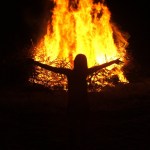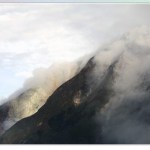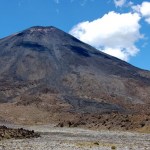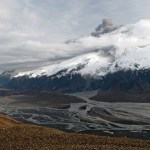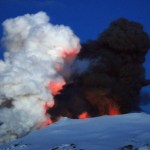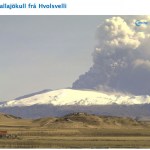speculation
"When I say, 'I love you,' it's not because I want you or because I can't have you. It has nothing to do with me. I love what you are, what you do, how you try. I've seen your kindness and your strength. I've seen the best and the worst of you. And I understand with perfect clarity exactly what you are." -Joss Whedon
I bet you love science; practically all of us do, whether we realize it or not. As children, we all live as scientists, born with no knowledge or experience of this world, but with inherent ability to learn and adapt.
Image credit: ©2005-2013 ~cchhrriissttaa, of deviantART…
Well, I guess I timed that last piece reasonably well ;-), no? As you may have noticed, I am at present typing this on the internet, rather than carving it into a stone tablet (actually I'd probably just use a pen and a piece of paper, but stone tablet does sound more apocalyptic), so the latest solar storm wasn't a big deal. Still, it does seem like because there are so many fun things that could take out electricity for an extended period - let's call it widespread outages for months, anyway - that it does seem to be worth talking about. So let's talk.
What do you imagine such an outage…
On Pharyngula, PZ Myers tries to imagine an ancient squid, preying on reptilian whales and arranging their vertebrae as a testament to its glory. He writes "I love the idea of ancient giant cephalopods creating art and us finding the works now. But then, reality sinks in: that's a genuinely, flamboyantly extravagant claim, and the evidence better be really, really solid. And it's not." The claim comes from a fossil site in Nevada, where a cluster of ichthyosaur remains have long been thought to come from "an accidental stranding or from a toxic plankton bloom." But paleontologist Mark…
Yesterday was World Food Day, and NPR has a good piece about the role of speculation in food prices:
The economists argue that increased trading is a significant part of the reason grocery prices are higher this year.
And grocery prices are indeed up this year. For example, in August, the average price of bread in U.S. cities was up 17.4 percent over last year, while milk was up 12.4 percent, according to the latest report from the Bureau of Labor Statistics.
Brandon Kliethermes, an agriculture economist with the forecasting firm IHS Global Insight, agrees that speculators do increase…
Kevin Drum re-posts a chart on wind power made by Stuart Staniford showing that the number of new wind power plants installed in 2010 was way lower than in 2009 or 2008:
This is meant as a starting point for discussion about the big economic issues that might've caused this. One of the many, many reasons I'll never make it as a political pundit, though, is that when I see a graph like this, I'm inexorably drawn to speculating about aspects of it that really have nothing to do with the intended point. In this particular case, I look at this graphic and ask myself "Why are there so many wind…
If you want to see it in color, all you have to do is google image up a history of the price of oil and superimpose it on the price of various staple crops. Take a look at oil and then rice, soybeans, wheat and corn. Look closely at 2008, and at the present. I will put up a visual presentation of this material myself later this week, but if you'd like to see it sooner, it is right there to look at, no great challenge.
What we see is fairly simple - and incredibly complicated. The intertwining of markets, of energy and food, tied by biofuel production and national policies, and the fact…
Sinabung on Sumatra erupting on August 29, 2010.
Eruptions readers were quick on the news about the new eruption at Sinabung in Indonesia. There isn't much known about the eruptive history of the volcano - checking out the Global Volcanism Program, the last activity at Sinabung might have been an explosive event in 1881 with persistent fumaroles up until 1912. However, most news sources are quoting 400 years as the last known eruption of the volcano, apparently information from the Indonesian government.
The eruption itself appears to be an ash-rich explosion with ash fall reported up to 30…
Mt. Elbrus in southern Russia, one of the active volcanoes in the Caucasus Mountains. (Note the prominent flow levees sticking out of the snow cover on the dacite lava flow in the middle of the image.)
Most people (including myself) aren't fully aware of the active volcanoes in the Caucasus Mountains, but sure enough, there are volcanoes that have erupted fairly recently (geologically-speaking). One of the active volcanoes in the Caucasus Mountains of Russia is Mt. Elbrus, just north of the border with Georgia, and it has erupted as recently as ~50 A.D., which for a volcano is the blink of…
Kilauea lavas on the move near Kalapana. Image taken July 17, courtesy of the Hawaiian Volcano Observatory.
Some news over the last few days:
The lava flows from Kilauea are moving with a vengeance right now, damaging roads and heading for some structures. The lava flows near Kalapana have moved almost 200 meters since Sunday, closing within 100 yards of homes in the area. The lava is moving to the east along Highway 130 and 137 - and tourists are making it difficult to get around as they park to watch the lava - upwards of 2,000 people! A number of people (and dogs) have had to be…
If you haven't heard, ScienceBlogs HQ has put its foot squarely in its jaw thanks to a little poor decision-making. Now, Eruptions is a little outside the mainstream of ScienceBlogs - there aren't many corporations that might influence my posting (unless you suddenly see "Eruptions - brought to you by RyanAir" the next time an Icelandic volcano erupts), so I would hope that the credibility of this blog is hopefully not too threatening by the PepsiBlog, but I feel for my other ScienceBloggers who may be adversely effected for various reasons. In solidarity with them, Eruptions will be quiet…
News for Monday!
Ngauruhoe in New Zealand, showing the dark lava flows of basaltic andesite on the slopes of the young volcanic cone. Image by Erik Klemetti, taken January 2009.
A couple pieces of news from two Russian volcanoes on the Kamchatka Peninsula: (1) last week's report of activity at Gorely appears to be semi-substantiated with new photos on the KVERT website (Russian). The images from June 6 and 12 (2010) shows steam plumes coming from the volcano - one as tall as 500 meters. Now, this doesn't imply that an eruption occurred, but it might suggest activity on on the upswing. KVERT…
This week has been destroyed by workshops and my last death throes with a paper I am submitting on my research in New Zealand. And to think, I thought it might settle down a little after the students left.
To news!
Ash fall on a taxi cab near Guatemala's Pacaya.
Pacaya in Guatemala erupted yesterday causing evacuations of people near the volcano and the closure of Guatemala City's main airport. Pacaya is a mere ~25 km from the capitol of this Central American nation. Tragically, a news reporter from one of the capitol's TV stations died when they were struck by volcanic debris, again…
I an in the home stretch for grading exams, so just a quick update for today:
The evidence of floods from the Eyjafjallajökull eruption, taken on May 1, 2010 by Dr. Joe Licciardi.
Airports now as far south as Spain, Morocco and the Canary Islands are facing closures due to the Eyjafjallajökull ash. The latest London VAAC ash advisory has the ash wrapping around western and southern Europe, which I am sure is making life interesting for routing transatlantic flights into Europe. The flights within Europe don't seem to be that effected according to Eurocontrol - and they have even dropped…
A shot of the summit area of Eyjafjallajökull, showing the twin steam-and-ash plumes from the lava flow and active vent. Picture taken by Dr. Joseph Licciardi (UNH).
Over the weekend, the newly reinvigorated ash eruptions from Eyjafjallajökull combined with favorable winds meant that ash from the eruption closed airspace over swaths of Europe, including Ireland, Spain, Portugal, Italy, Austria and Germany. These disruptions are continuing into the new week, although most of the disruption is for transatlantic flights. However, the threat of ash is more present than ever, as Ryanair…
Webcam shot of Eyjafjallajökull erupting on April 17, 2010.
I don't want to get too far into this but there has been a lot of chatter about the link between melting ice caps and increase/decrease/neither of volcanism. The two main articles we're talking about are:
Scientific American, saying that ice loss could increase volcanism:
Ice cap thaw may awaken Icelandic volcanoes
The long and short of the Scientific American study is that you reduce the pressure of rocks in the crust/mantle below Iceland, you generate more melting - depressurization melting of rock. If you melt the ice cap, you…
The steam and ash plume from the Eyjafjallajökull subglacial eruption that started early morning, April 14, 2010.
Well, after the brief respite when there was speculation Eyjafjallajökull-Fimmvörduháls eruption might be over, we now know what was going on. After the original fissures ceased activity, the magma found a new route to the surface, this time underneath the Eyjafjallajökull glacier. Eruptions readers last night watched as an earthquake swarm arrived underneath the icecap, which prompted Icelandic officials to start evacuating people from the area around the volcano (photo…
The Eyjafjallajökull-Fimmvörduháls eruption at night on April 10, 2010.
I mentioned this earlier in the Monday Musings column, but the Eyjafjallajökull-Fimmvörduháls eruption in Iceland that started last month seems to be at a nadir of activity since its inception. This is being interpreted by the Icelandic Met Office as a sign that the eruption itself may be winding down after less than a month of activity - the earthquakes and inflation associated with the eruption appears to be subsiding along with the actual eruptive activity. Now, there is always the chance that the fissure will…
Idunn Mons on Venus with recent emissivity data from the Venus Express overlaid on the topography, suggesting recent lava flows.
NASA released images today that suggest that the surface of Venus has experienced some relatively recent volcanic events (geologically speaking). By examining the surface in infrared, the Venus Express, launched by the European Space Agency (ESA) has found that three spots on the surface exhibit signs of recent volcanism. The long-and-short of the research lead by Dr. Sue Smrekar of JPL is that a number of Venutian lava flows (shown above on Idunn Mons) show less…
A view of the steaming Mt. Etna, taken on April 8, 2010 by Dr. Boris Behncke.
Eruptions reader and member at Italian National Institute of Geophysics and Volcanology in Catania, Dr. Boris Behncke, has been keeping many of us appraised on the goings-on at Mt. Etna. A series of earthquakes occurred on April 2-3 along a fault near the north flank of the volcano - 175 earthquakes in all producing some impressive results - and Boris has noted increased "rumblings" at Etna since. This has culminated in explosions and ash April 7-8. Most of the ash appears to be made from merely crushed rock of…
The eruption at Eyjafjallajökull-Fimmvörduháls continues on - the explosive spatter and bomb eruptions at the new central vent (on the second fissure) were impressive all night, making the hikers/cars/aircraft look like mites in comparison. This eruption has, so far, followed the pattern of Hawaiian-style volcanism quite well, so I thought it could be a good time to talk about what exactly Hawaiian-style volcanism is. There is a sequence of events that leads up to and follows the start of an Hawaiian-style eruption - although this sequence can stop at any point along the way - but it is…
